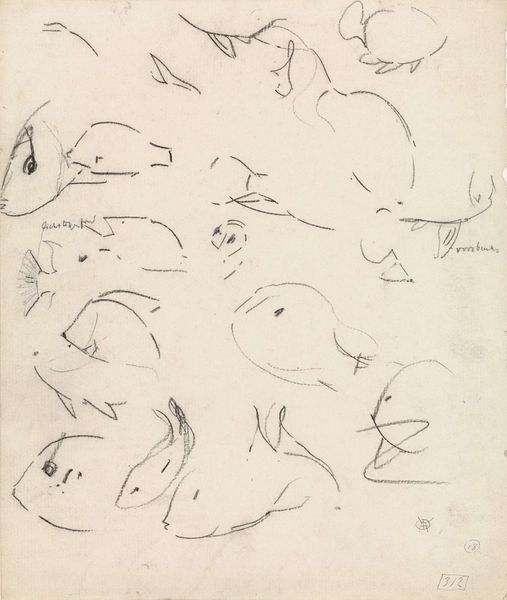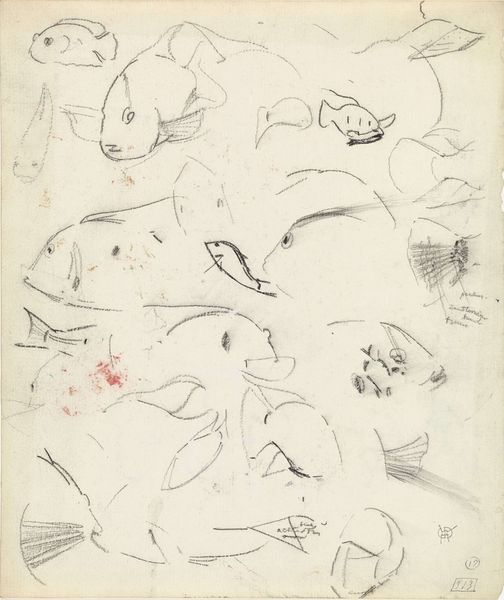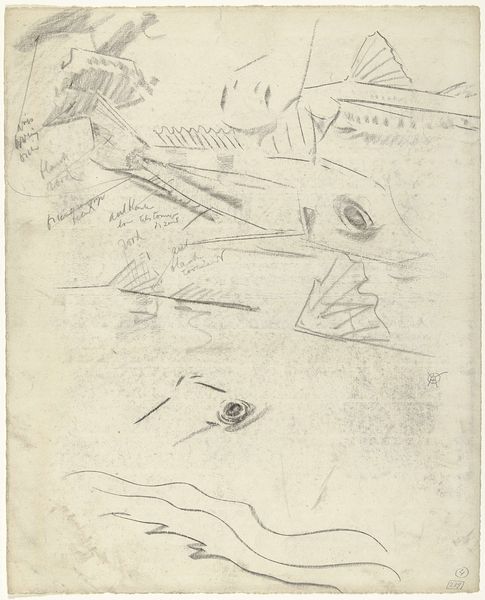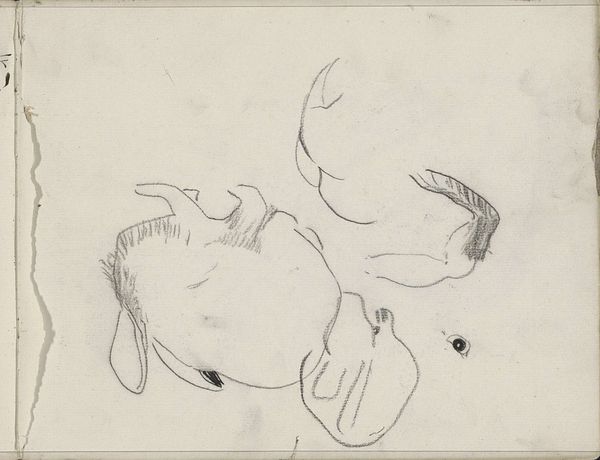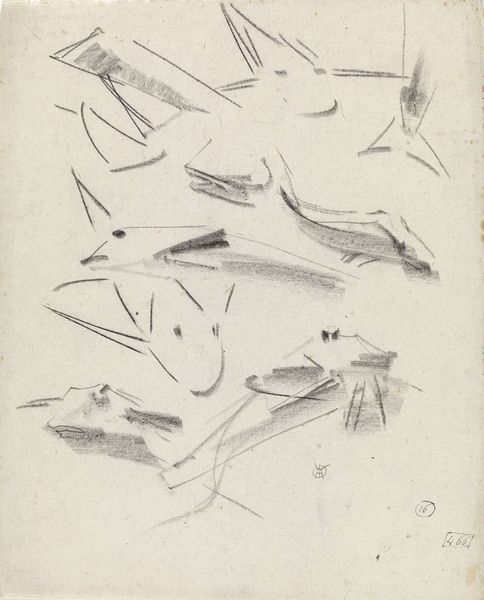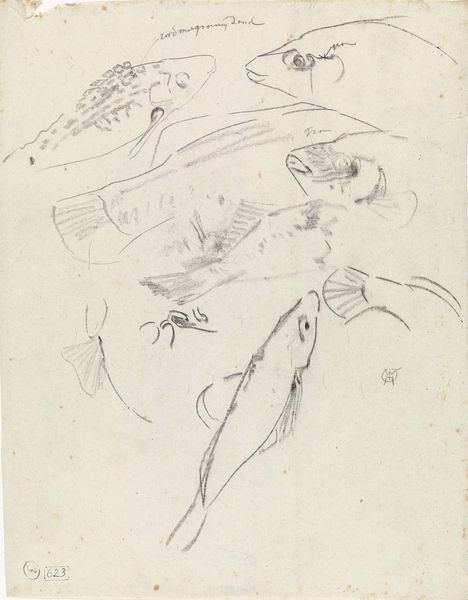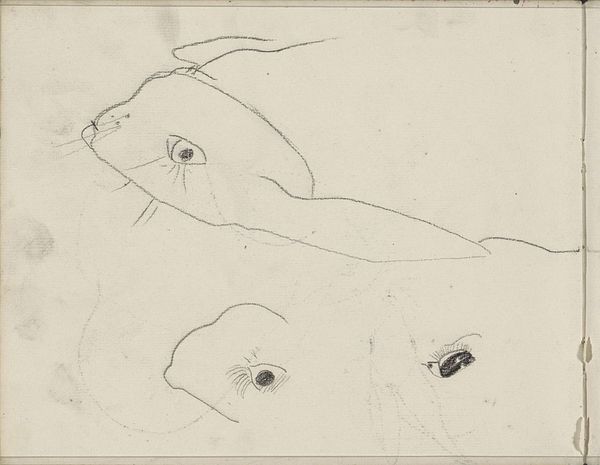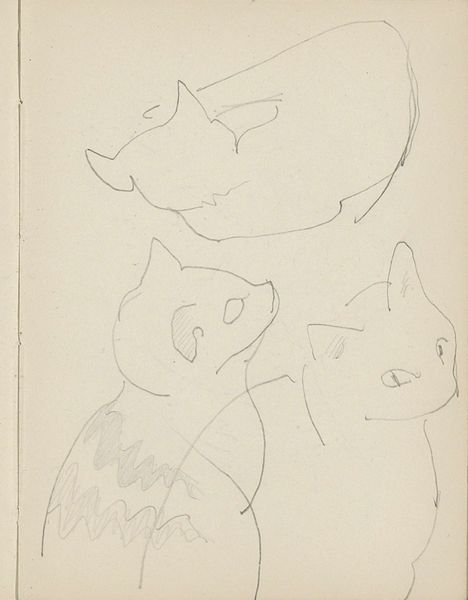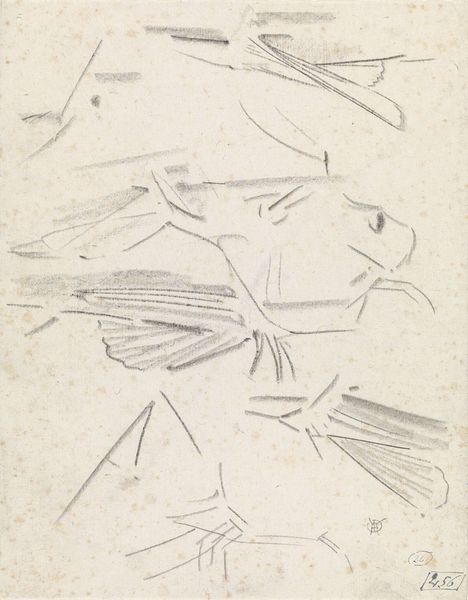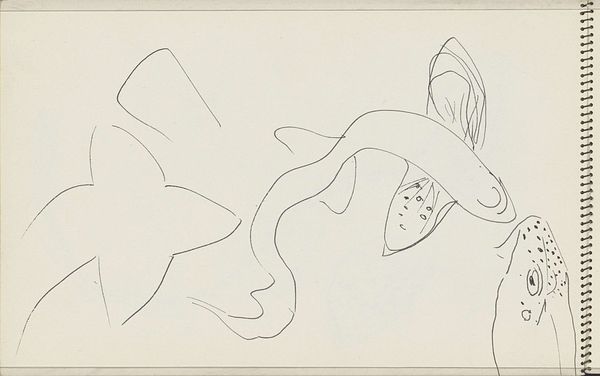
drawing, paper, pencil
#
drawing
#
amateur sketch
#
light pencil work
#
quirky sketch
#
pencil sketch
#
paper
#
personal sketchbook
#
idea generation sketch
#
ink drawing experimentation
#
pen-ink sketch
#
pencil
#
line
#
sketchbook drawing
#
realism
#
initial sketch
Dimensions: height 281 mm, width 215 mm
Copyright: Rijks Museum: Open Domain
Curator: Well, this piece presents us with a fascinating contrast! Before us is Gerrit Willem Dijsselhof's "Studies van vissen," dating roughly from 1876 to 1924, housed right here at the Rijksmuseum. It's a pencil drawing on paper. What are your initial thoughts? Editor: Ethereal comes to mind. These fish seem almost like ghosts suspended in a boundless space. The light pencil work contributes to the dreamlike quality, like sketches from a half-remembered dream. Curator: Interesting! Considering the period, I see a convergence of industrial advancements impacting fishing techniques and a growing awareness, albeit limited, about the marine environment. Dijsselhof was deeply concerned with the materials used to create an image; do you see how the pencil's potential informs our perception of ephemerality, connecting to that moment of environmental and societal anxiety? Editor: Absolutely. And beyond the medium itself, consider the subjects: fish. Who gets to define what lives matter? This sketchbook could be an exploration, or even a challenge to late 19th and early 20th-century hierarchies of living beings during times when species were disappearing as new production methods led to both human and non-human exploitation and extinction. The drawing style mirrors that lack of sharp definition in broader social narratives and assumptions about "value." Curator: I appreciate that intersectional viewpoint. For me, the roughness of the lines points to Dijsselhof’s experimentation. Was it a study towards a larger work? Or maybe simply him figuring out the barest representation of an idea? One could imagine his intense focus and interaction with his craft and labor. Editor: It challenges that separation, right? Isn’t observing and drawing also a form of "labor," of trying to capture the truth and meaning that one encounters in an environment? So, it blurs the lines, if you will, about our perception of "work." But look closely, you notice how it seems unfinished. Can one extrapolate, then, a larger narrative of a culture in progress and of environmental activism still needing progress and definition? Curator: Exactly, and from my angle, these 'incomplete' details underline the physicality of the process itself: the hand moving, the pencil dragging and making marks. I am so intrigued by these questions. What do you think about how relevant such material interactions remain for contemporary artists engaging in similar experimental mark-making in a digital era? Editor: Well, now I see even more clearly what is at stake in interpreting it for the present day. It is definitely food for thought for understanding the past and the possibilities that the future offers for both the environment and ourselves.
Comments
No comments
Be the first to comment and join the conversation on the ultimate creative platform.
